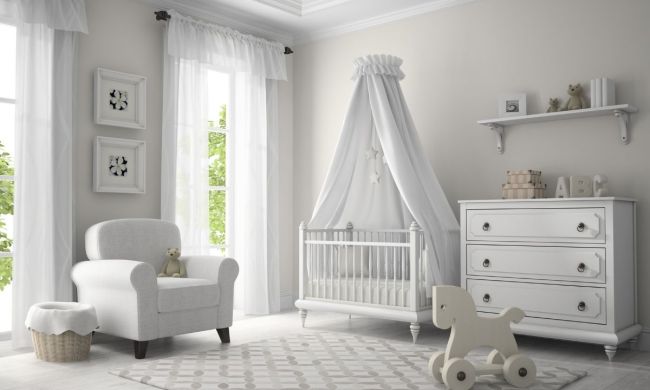Diaper duty is not for the faint of heart. Those itty bitty newborns of yours will soon turn into wiggly worm infants (then escape-artist toddlers), and you’ll still have the tough job of wiping, cleaning, and changing as quickly, efficiently, and tidily as possible.
In addition to the essentials (aka wipes, creams, and nappies), you’ll also want to get a changing pad. Whether you plan on setting up a station on top of a dresser or just diapering your cutie anywhere around the house, it’s wise to have a designated pad for your mini’s comfort and your own convenience. These items may seem pretty generic (and some options are!), but there are a few distinguishing factors to consider when shopping for changing pads for babies. Here are our top picks.
Best overall: Keekaroo Peanut Changer
Our top pick for the best changing pad might seem a little pricey, and, yes, it’s definitely more of a splurge, but that’s not without good reason. The Keekaroo Peanut Changer does not need a cover and is completely impermeable to liquids. (In other words, you don’t have to worry about deep cleaning inevitable leaks and other unidentified fluid messes; simply spray and wipe down (it is mold resistant). What’s more, while it’s soft to the touch, the tough outer shell is durable and won’t crack or deteriorate. It is also sturdy and stays securely in place.
Why we like it:
- No cover necessary
- Impermeable to liquids
- Has a soft yet sturdy design
Best budget-friendly option: Summer Infant Contoured Changing Pad
Want a super-basic option? This one from Summer Infant is affordable and functional; basically, it’s a no-frills changing pad — and it’s pretty much all you need. It has contoured walls, a safety belt, and a security strap to attach to furniture. Made with soft foam, the double layer of vinyl makes cleaning easy. The pad is also waterproof and can be wiped down between uses. Of course, you will want to consider getting a soft and fuzzy fitted cover to put on top.
Why we like it:
- Inexpensive
- Features a waterproof pad
- Contoured walls, safety belt, and a security strap keep babies firmly in place
Best for safety: L.A. Baby 4 Sided Waterproof Diaper Changing Pad
If you want to feel like your newborn or infant is snuggly cocooned while lying on a changing pad, this option offers four 4-inch walls. Of course, you still don’t want to walk away when your baby is mid-change, but this one can still give you a bit more peace of mind while you stay close (sometimes, little ones just like to lounge for a while and enjoy the change of scenery). The outer shell is waterproof, and the bottom features a nonskid bottom, so it won’t slide or shift during use. In addition to a safety belt with a buckle, it also has a security strap that can attach to a changing table or dresser for extra security.
Why we like it:
- Four 4-inch walls are great for anxious parents
- Safety belt and security strap keep babies firmly in place
- Has a waterproof outer shell
Best earth-friendly option: Sealy Baby Soybean Comfort 3-Sided Contoured Diaper Changing Pad
If you are trying to be conscious of the materials used in baby products, this changing pad from Sealy is made with a soybean-enhanced foam that’s plush and supportive, but it releases very low chemical air emissions to ensure a clean, green, and healthy nursery. It has a waterproof top layer, a nonslip grip on the bottom, a safety strap to secure to furniture, and a safety buckle to keep your baby in place.
Why we like it:
- Made with earth-friendly materials
- Has a waterproof top layer
- Safety buckle and strap keep babies firmly in place
Best on-the-go option: Lil Fox Portable Changing Pad
You’ll want to keep a fold-out portable pad for on-the-go diaper changes. Whether you stash it in a diaper bag or keep it in the trunk of your car, this option is nifty, convenient, and cute to boot. This sweet pad features a wipes pocket that holds a whole 100-count pack of wipes, a diaper pocket, and a zipper compartment for housing creams and other necessities. Measuring just shy of 2 feet x 13.5 inches, it’s waterproof and features an insulated surface with a comfy built-in memory foam pillow.
Why we like it:
- Portable design
- Features multiple pockets for keeping essentials on hand
- Has a comfortable memory-foam pillow


